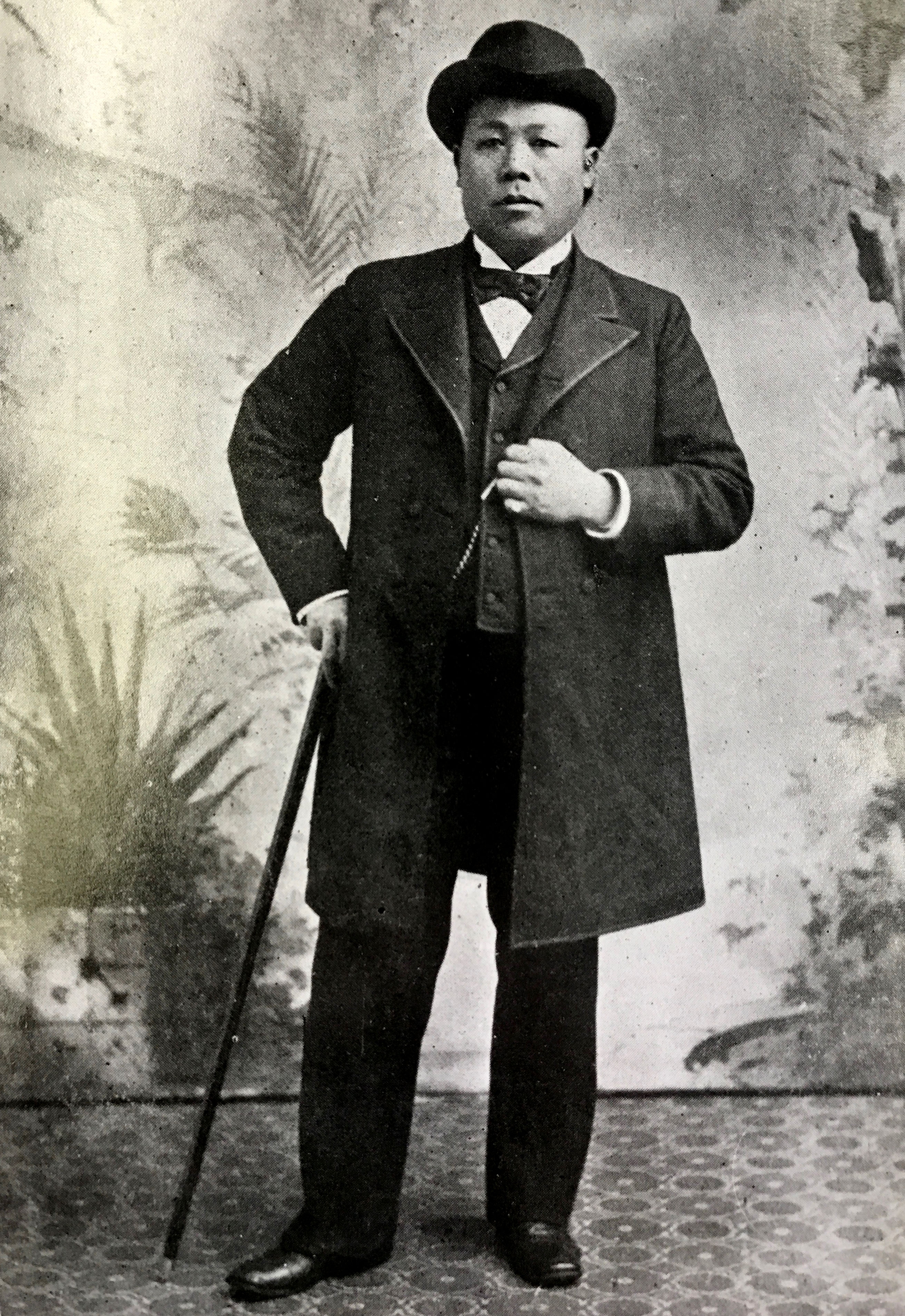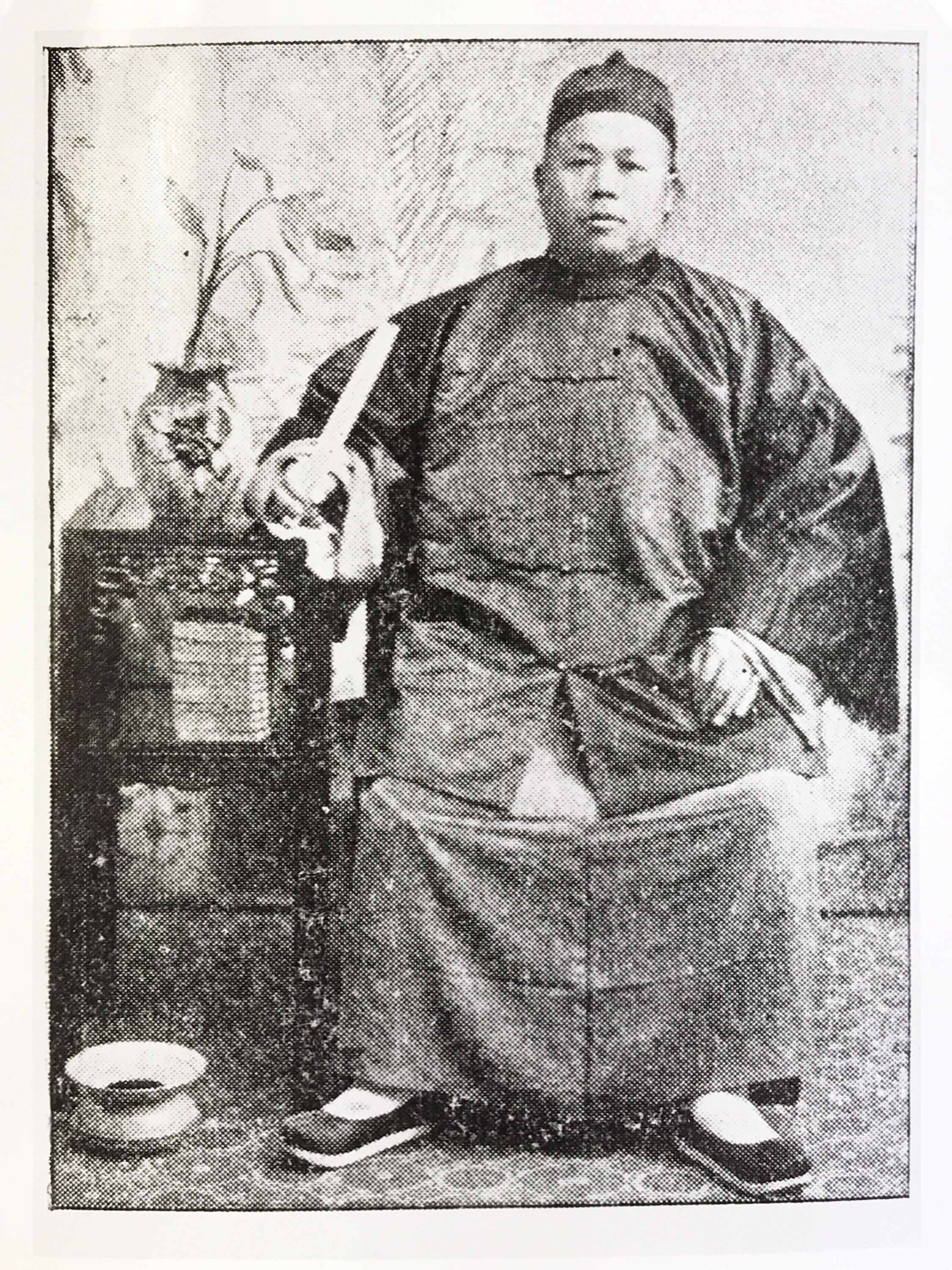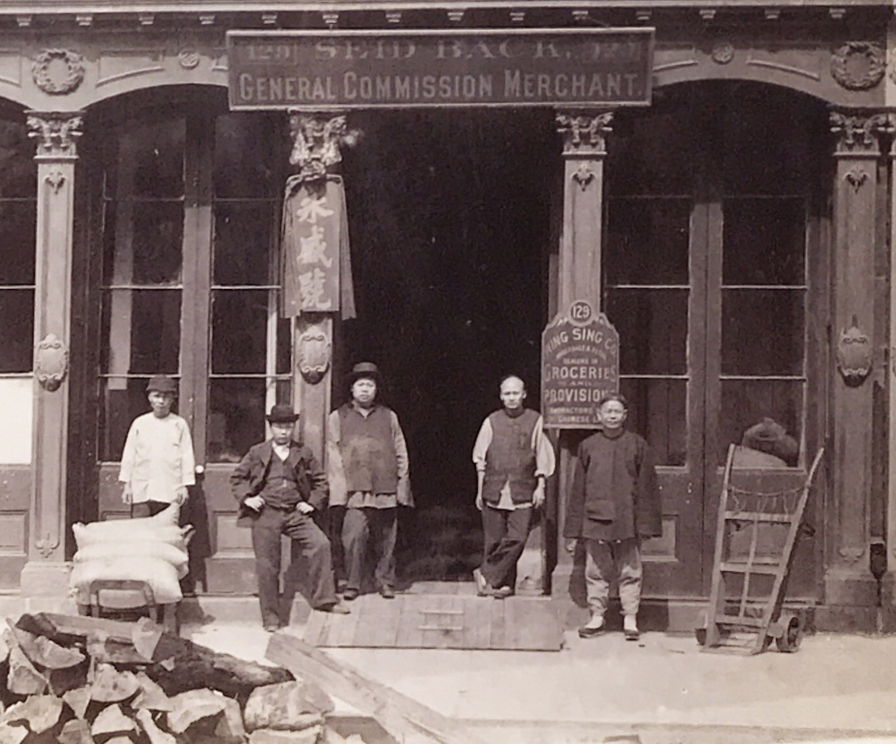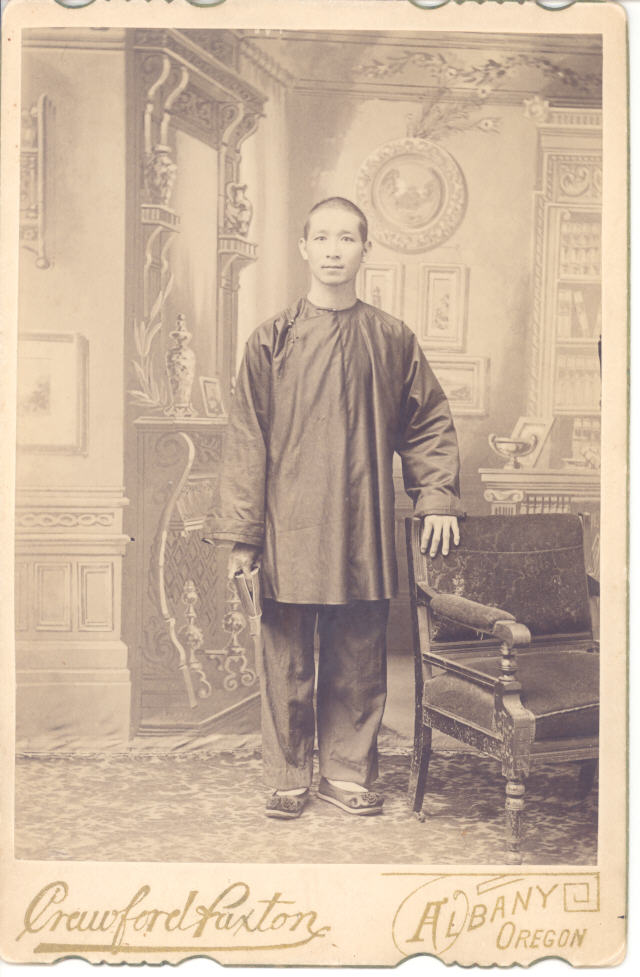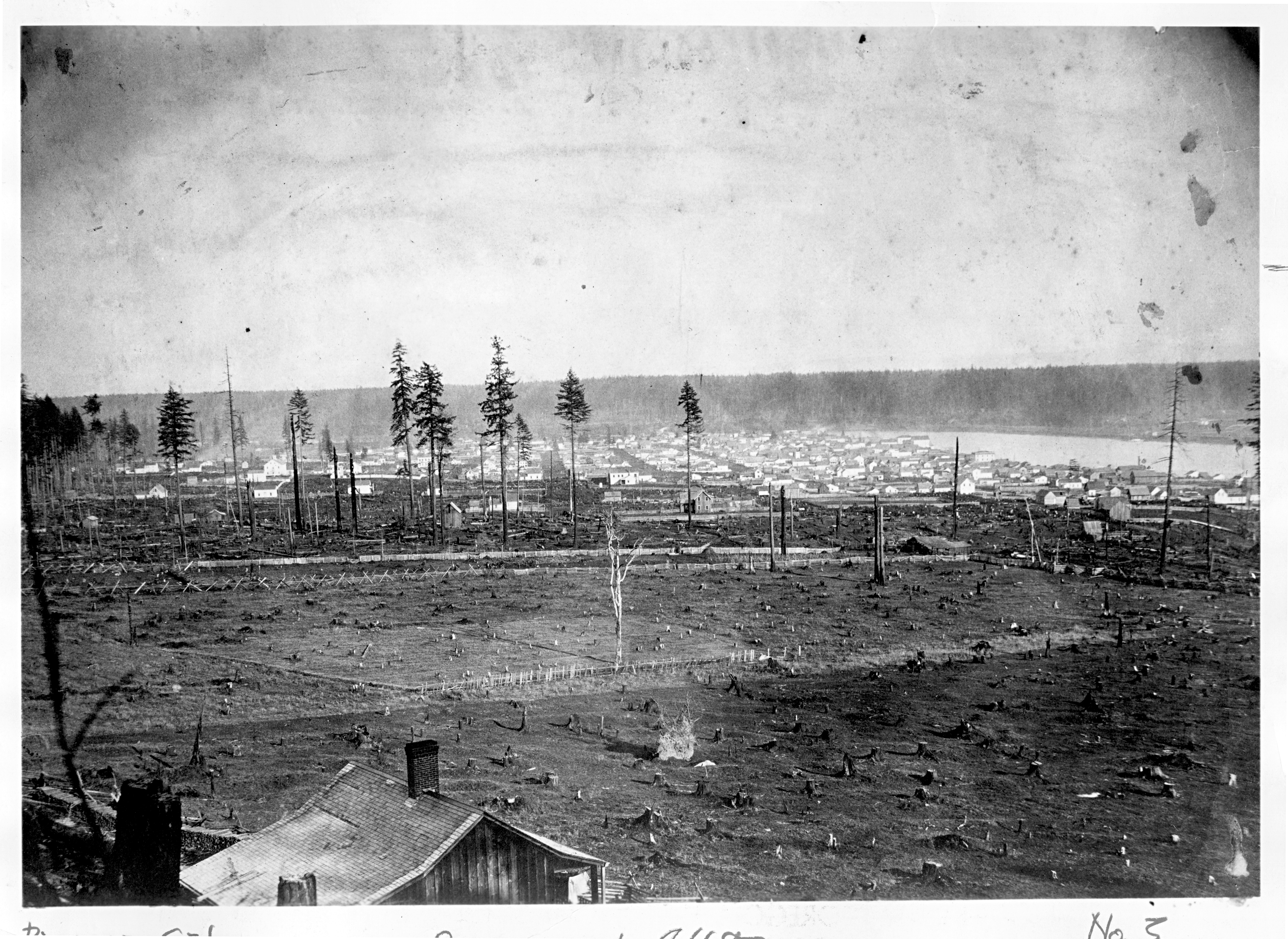Seid Back was a Chinese immigrant, merchant, and labor broker whose reputation for honesty, philanthropy, business acumen, sense of community, and patriotic zeal made him among the most prominent Chinese Americans in early Oregon history. He provided a crucial source of labor for railroad construction, agriculture, and salmon canneries, serving an important role in the state’s early economy. Seid’s skillful service as cultural liaison between Portland’s white majority and the Chinese population helped the city avoid some of the racist persecution found in other West Coast cities.
Seid Back was born in a Cantonese-speaking region of China on November 18, 1851. His obituary in the Oregonian reports that he was the son of Seid Yow King, "of an ancient house," and that he was born in “San Way Chung Sar,” which may correspond to a part of Xinhui in modern Guangdong. He immigrated at age seventeen to the United States and worked as a railroad laborer and cook. He was briefly imprisoned (and later pardoned) in Idaho Territory for an unknown crime, after which he saved $3,000 in wages and moved to Oregon. Within a few years, Seid had achieved fluency in English and converted to Christianity.
By 1875, Seid had opened in Portland a general merchandise store on SW Third and Washington and the Wing Sing Long Kee Company, a labor contracting business that provided as many as sixteen hundred railroad workers a season. Columbia River salmon canneries were primarily staffed by skilled Chinese workers, of which hundreds a season were brokered by Seid. By 1894, the Oregonian’s Handbook of the Pacific Northwest described him as holding stock “in a large number of American and Chinese enterprises, including bank and insurance companies,” and noted that his company was making $200,000 a year on the import and export of goods. His business dealings were characterized by scrupulous honesty. Seid possessed a “word that was respected by all who had dealings with him,” Judge Henry McGinn said. “He made many contracts merely by word and always kept the full spirit of those contracts.”
Seid married Chong Quey Choy in 1875; their son Seid Gain was born four years later. As a leader of Portland’s nascent Chinese community, the older Seid deftly navigated the racial divide of the era, which was characterized by increasing racial persecution, including the scapegoating of Chinese immigrants by nativist organized labor. He was adept at operating within parallel societies, a skill illustrated by a pair of photographs taken at roughly the same time, in one photo wearing a three-piece-suit and in the second dressed in the formal robes of Qing Dynasty China. His son, Seid Gain, attended school in China for seven years before returning to Portland to be educated at Bishop Scott Grammar School.
Seid’s patriotism for his adopted country was well known and included annual donations of hundreds of dollars in fireworks so Oregon children could celebrate the Fourth of July. He hosted annual banquets that feted the city’s white elites, politicians, and businessmen, where he served “strange and expensive dishes” as part of a “sumptuous and costly menu” estimated to cost at least two thousand dollars. The banquets, as reported by the Statesman Journal in 1916, were attended by “practically every judge, county and state official.” These familiarizing efforts encouraged white officials’ relative tolerance of Chinese and helped ensure their equal protection under the law.
Within the Chinese American community, Seid helped sponsor immigrants, funded civic organizations, sent charitable relief to China, and provided loans and opportunities for the newly arrived. A letter from a Chinese benevolent society in Portland to the Chinese foreign minister in Washington, D.C., recognized that “our people long ago learned [Seid’s] value…. His conduct and service to us have been such that we have come to regard him as a benefactor.”
By 1888, resentment against the Chinese—fueled by economic contraction, nativist demands of organized labor, and virulent racism—was rampant on the West Coast. The Chinese Exclusion Act had been passed in 1882, and three years later a racially motivated riot in Tacoma had resulted in local Chinese being forced onto trains headed for Portland, followed by the looting and razing of their community. The “Tacoma Method” was soon emulated throughout the West Coast, including Oregon City in 1886. In 1887, as many as thirty-four Chinese miners were murdered for gold in Hells Canyon. Though Sinophobic violence, racism, and discrimination did occur in Portland, the city was largely exempt from the outrages seen elsewhere, partly because of Seid Back’s efforts at intercommunity dialogue.
Seid’s navigation of these conditions was put to a test in 1888 when a daytime shooting outside a downtown gambling hall—believed committed by a professional Chinese criminal called a “highbinder”—left one Chinese man dead and several others in critical condition. The shooting outraged white Portland and led to a meeting of prominent Chinese citizens in which Police Chief Samuel Parrish, translated by Seid, threatened the Chinese with violence should such an event occur again. “If we cannot get the guilty ones alone,” Parrish threatened, “we will arrest innocent ones as well.” Faced with threats from both highbinders and white Portland, Seid embraced the police directive, emphasizing that law-abiding Chinese would “rout out” every criminal.
Seid’s work sometimes straddled the realms of respectability and legality. During the 1890s, he was accused of smuggling both workers and (then-legal) opium into the United States without paying the appropriate duties and fees. After several inconclusive trials, he was convicted in 1895 and fined $5,000. By this time, he was wealthy and had substantial real estate holdings in Oregon, owning “something over $50,000 worth” of property in Portland, mostly in today’s downtown. In 1911, the Handbook of the Pacific Northwest reported a “conservative evaluation” of his Portland property to be “about $200,000.”
After Chong Quey Choy died in 1894, Seid married Ching Wan and later adopted two white children (Daniel and George Seid) from local orphanages. He bought a summer cottage in Seaside and a ranch in Independence, where he provided work and lodging for hop pickers and their families during a particularly difficult winter, paying triple wages to the hardest working.
Seid died on November 1, 1916, after sustaining injuries from a fall at his ranch. His funeral at the First Baptist Church in Portland was attended by “the largest concourse of both Chinese and Caucasians ever assembled in this city for such a purpose.” Judge McGinn gave the eulogy: “I have known all the eminent men of Oregon for the past 50 years, and I never knew any of them who measured up to Seid Back in honor, love for his kind, desire to help others and faithfulness to ideals.” Ching Wan lived in Portland until her death in 1960. His son Seid Gain became an official interpreter of the U.S. Immigration Bureau, the first person of Chinese descent admitted to the Oregon Bar, and the co-founder of the American-Born Chinese Brigade paramilitary organization in 1899.
-
![]()
Seid Back.
Courtesy Oregon Hist. Soc. Research Library
-
![]()
Seid and Seid Gein, c.1893.
Courtesy Oregon Hist. Soc. Research Library
-
![]()
Seid Back.
Courtesy Oregon Hist. Soc. Research Library
-
![]()
Seid Back, c.1893.
Courtesy Oregon Hist. Soc. Research Library
Related Entries
-
![Chinese Americans in Oregon]()
Chinese Americans in Oregon
The Pioneer Period, 1850-1860 The Cantonese-Chinese were the first Chi…
-
![Expulsion of Chinese from Oregon City, 1886]()
Expulsion of Chinese from Oregon City, 1886
On February 22, 1886, approximately forty men gathered in Oregon City a…
-
![Portland]()
Portland
Portland, with a 2020 population of 652,503 within its city limits and …
Related Historical Records
Map This on the Oregon History WayFinder
The Oregon History Wayfinder is an interactive map that identifies significant places, people, and events in Oregon history.
Further Reading
Wong, Marie Rose. Sweet Cakes, Long Journey: the Chinatowns of Portland, Oregon. Seattle: University of Washington Press, 2004.
Jones, Edward Gardner. “The Oregonian's Handbook of the Pacific Northwest.” Oregonian Publishing Company. 1894. Accessed February 19, 2020. https://archive.org/details/oregonianshandbo00jone/page/n6/mode/2up
“Mapping Anti-Chinese Violence.” The Tacoma Method. Andrew Gomez. Accessed February 19, 2020. https://www.tacomamethod.com/mapping-antichinese-violence
“Seid Back Passes,” Oregonian, November 2, 1916. Page 6.
"Samuel B. Parrish." Portland Police Musuem and Historical Society. http://portlandpolicemuseum.com/samuel-b-parrish.html
“Seid Back, Big-Hearted Chinese Merchant, Dies At His Farm,” Statesman Journal, November 2 1916, Page 3.
Campbell, Sara. "The first known attorney of Chinese descent admitted to practice in Oregon." State of Oregon Law Library, April 5, 2016. https://soll.libguides.com/blog/the-first-known-attorney-of-chinese-descent-admitted-to-practice-in-oregon

